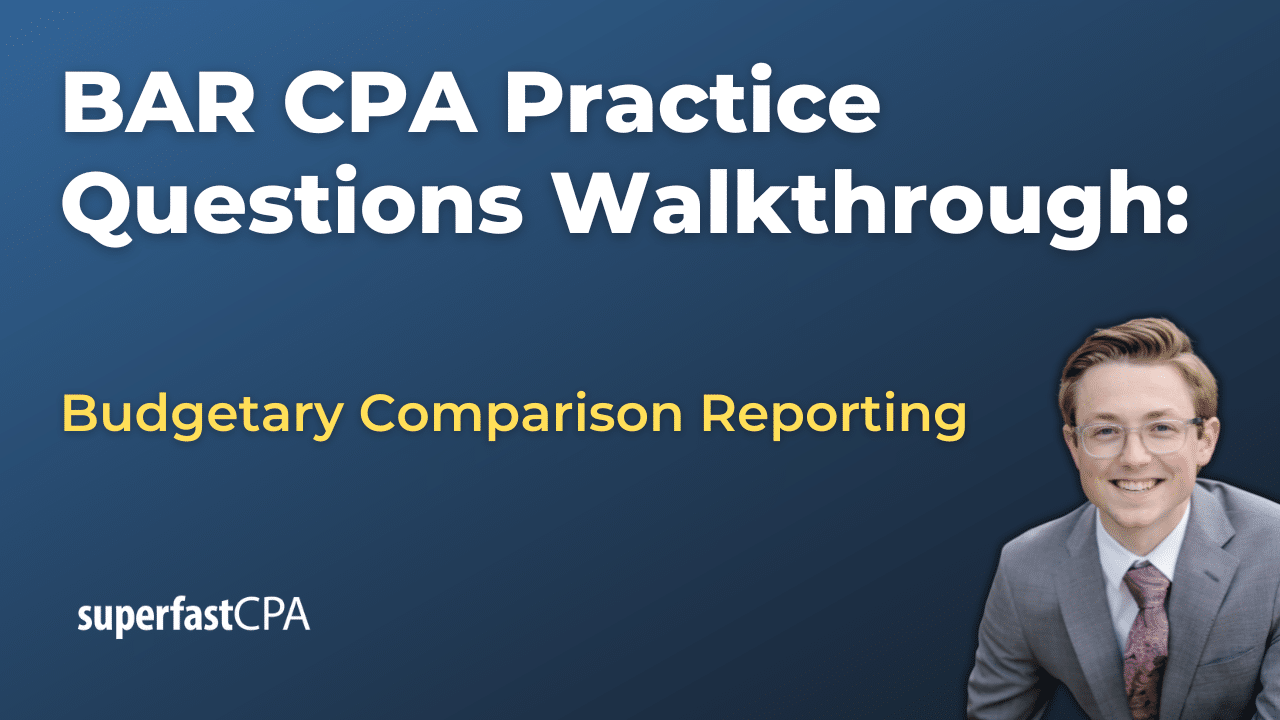In this video, we walk through 5 BAR practice questions teaching about calculating foreign currency translation adjustments. These questions are from BAR content area 2 on the AICPA CPA exam blueprints: Technical Accounting and Reporting
The best way to use this video is to pause each time we get to a new question in the video, and then make your own attempt at the question before watching us go through it.
Also be sure to watch one of our free webinars on the 6 “key ingredients” to an extremely effective & efficient CPA study process here…
Calculating Foreign Currency Translation Adjustments
In multinational corporations, subsidiaries often operate in currencies that differ from the parent company’s reporting currency. When this happens, the financial results of the subsidiary need to be converted—or translated—into the parent company’s reporting currency for consolidated financial reporting. This process is called foreign currency translation, and it plays a critical role in ensuring consistency, comparability, and compliance with accounting standards.
This overview breaks down the key concepts. We’ll cover the methods used, how gains and losses are treated, and how to identify a company’s functional currency.
When Do You Translate? When Do You Remeasure?
The first question is: what method do you use to bring foreign operations into the consolidated financial statements?
That depends on the relationship between the local currency, the functional currency, and the reporting currency.
- If the subsidiary’s functional currency is the same as the local currency it uses for day-to-day operations, and that functional currency is different from the reporting currency, you use the current rate method.
- If the local currency is not the functional currency, but the reporting currency is, you use the temporal method to remeasure.
This distinction determines how you handle exchange rates, and whether the resulting adjustments go to Other Comprehensive Income (OCI) or the income statement.
The Current Rate Method (Translation)
When the functional currency is not the same as the reporting currency—but it is the same as the local currency—you translate the financial statements using the current rate method.
Here’s how it works:
- Assets and liabilities: use the ending spot rate.
- Equity: use historical rates (except for retained earnings).
- Revenues and expenses: use the average exchange rate for the period.
- Translation adjustments go to OCI—not the income statement.
Let’s walk through a simplified example:
- A subsidiary has net assets of LC 1,000 on January 1.
- It earns LC 100 during the year.
- On December 31, net assets are LC 1,100.
Now assume:
- Beginning rate = 1.10
- Ending rate = 1.30
- Average rate = 1.20
Step 1: Translate beginning net assets at 1.10 → $1,100
Step 2: Add income for the year (LC 100 × 1.20 avg rate) = $120
Step 3: Ending net assets translated at 1.30 = $1,430
Now compare:
- Expected ending net assets based on operational activity = $1,100 + $120 = $1,220
- Actual translated ending net assets = $1,430
Translation adjustment = $1,430 – $1,220 = $210 gain
This amount goes into OCI.
The Temporal Method (Remeasurement)
When the reporting currency is the functional currency—but the subsidiary keeps its books in a different local currency—you have to remeasure. The remeasurement process adjusts local currency balances as if they had originally been recorded in the functional currency.
Here’s the general rule:
- Monetary items (like cash, receivables, and payables): use the current exchange rate.
- Nonmonetary items (like inventory and fixed assets): use the historical rate.
- Revenues and expenses related to monetary items (like interest): use the current rate.
- Expenses tied to nonmonetary items (like depreciation): use the historical rate.
- Remeasurement gains and losses go to the income statement—not OCI.
For example, say a company holds:
- Cash: LC 500
- Inventory: LC 1,000 (acquired when exchange rate was 1.00)
- Equipment: LC 2,000 (also historical rate 1.00)
Today’s exchange rate is 1.20.
Remeasured assets:
- Cash = $600 (500 × 1.20)
- Inventory = $1,000 (1,000 × 1.00)
- Equipment = $2,000 (2,000 × 1.00)
Total = $3,600
If the local books show a value of $3,500, the $100 difference is a remeasurement gain and goes to net income.
How Currency Fluctuations Affect Translation Adjustments
Translation adjustments arise from changes in exchange rates. These changes may cause apparent gains or losses when local financials are translated, even if the business performance itself hasn’t changed.
If the functional currency appreciates against the reporting currency, translated net assets are worth more in reporting currency terms, resulting in a translation gain.
If it depreciates, you get a translation loss.
These gains and losses go to OCI under the current rate method, which avoids distorting net income with effects outside of operating performance.
Example:
- Subsidiary’s net assets remain steady in local currency.
- Exchange rate goes from 1.10 to 1.40 (functional currency gets stronger).
- Translated net assets increase → translation gain reported in OCI.
How to Determine the Functional Currency
A common trap is assuming the functional currency is simply the currency used for payroll or expenses. In fact, the functional currency is the one that best represents the primary economic environment in which the entity operates.
You should ask:
- What currency influences sales prices?
- What currency do customers pay in?
- What currency is used for financing and internal cash flows?
Here’s a scenario:
- Sales are in euros.
- Financing and debt are in euros.
- Operating costs are in local currency (e.g., pesos).
- The company uses U.S. dollars for reporting.
Answer: the functional currency is the euro, because that’s what drives sales and financing activity—even though expenses are in pesos.
Summary of Key Points
Let’s wrap up the concepts with five key takeaways:
- Use the current rate method when the functional currency differs from the reporting currency; translation adjustments go to OCI.
- Calculate translation adjustments by comparing translated net assets over time against translated net income.
- Under the temporal method, monetary items use the current rate; nonmonetary items use historical rates.
- A strengthening functional currency causes a translation gain; this is recognized in OCI under the current rate method.
- The functional currency is based on where revenues and financing come from—not just where expenses are paid.









